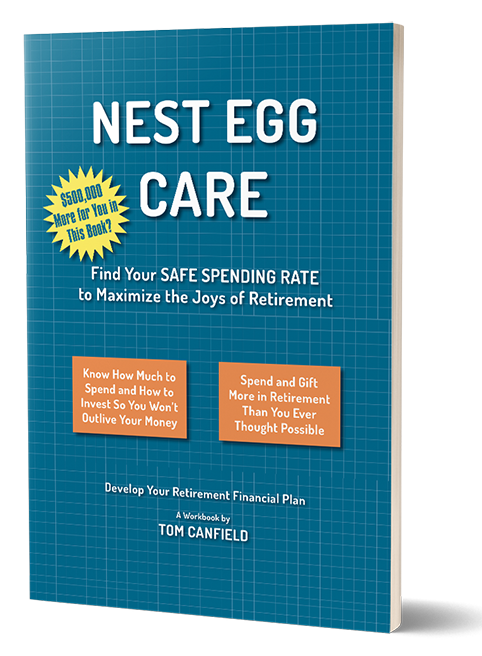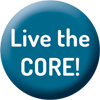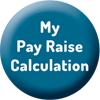How much effort is required to complete the tasks in the Workbook?
I don’t think it’s that many hours to complete your retirement financial plan, and I think they will be some of the most satisfying and valuable hours you will spend. It does takes time to absorb that you can trust your plan, since your spending will likely change (more than you’re are spending now) and your investing will change (much simpler than the way you are invested now). It’s not easy to grasp that SIMPLER is better – our brains are just not wired that way.
Nest Egg Care has 14 chapters that total 102 pages. So that’s about 8 pages per chapter. Not much. You’re taking small bites of the apple, not big ones. The book tries to lay out your decision points clearly. It calls out where you have work tasks and decisions to record on your Plan Worksheet; you’ll see the worksheet I completed for our plan. A narrative at the end of each section, “The Patti and Tom File,” describes how we applied the CORE principles, and you’ll see how our plan is playing out for us.
Why did you write this book?
I found no good answers to the questions of How Much is Safe to Spend and How Do I Invest now that I’m retired. Too few retirees can answer those questions. Oh, this game of Spend and Invest is sure different from the game of Save and Invest that we all have played for years. But the answers for Spend and Invest are tractable, and retirement can be better if we know the answers. My friend Larry asks, “Do we ever stop worrying?” And I argue the answer clearly is, “YES.” It’s a much happier retirement when we are worry free and can focus on “What’s the next fun thing to do,” and, typically, later in the Iyear, “Who’s going to benefit from our increased giving this year. And how much.” For Patti and me, giving now has been most rewarding: we can see we are helping those we love, in particular. Basically, I hope this book makes you happier, too. You can read more on this topic here and here.
What’s that “$500,000 more …” on the book cover mean?
Once you complete your Plan Worksheet, I think you’ll have a spending and investing plan that is 1) safer than the one you have now and 2) will almost certainly provide more for you and your heirs over time. Those two statements sound like contradictions, but they aren’t. Beginning portfolio values and results are stated in constant dollars and in terms of $1 million starting portfolio. In the book you’ll see a comparison of plans of two who are the exact same age. Most would judge each plan as reasonable, but one is safer by a factor of four in the out-years, and at expected sequences of return that plan provides $500,000 more. Safer. And More.
What are the key uncertainties we face as retirees in regards to our financial plan?
I assert there are four key uncertainties for our financial retirement plan: what’s safe to spend; how do we invest; future market returns; and life span. In that mix, we decide and control the first two. Those two are interlocked pieces of the puzzle: we have to decide both of those together. Once we fit those two together correctly, we can then squarely face the two uncertainties that we do not control: future market returns and life span.
How does Safe Spending Rate (SSR%) differ from Required Minimum Distribution (RMD%)?
RMD% is the the IRS stated percentage that those 70 1/2 and older must distribute from their IRAs in a year based on their balance at the end of the prior year. It’s designed to eventually capture taxes on the amount that was initially tax deferred and all subsequent growth that was tax deferred. Your RMD% increases with age. The amount of RMD will also vary depending on the year-end value of your IRA accounts.
SSR% is calculated to give you the safe amount you can spend – in constant dollars; it adjusts for inflation independent of variations in your Investment Portfolio. (You have to follow a couple of key investing rules.) Your SSR% is always greater than your RMD% in the year you start your plan. (Patti and I now are at a SSR% of 4.6% for 2017 spending as compared to my RMD% of 3.91% for 2017 and 0% for her.) And, obviously, since you are applying your SSR% to your total, your Safe Spending Amount is far more than the amount you withdraw from your retirement accounts using your RMD%.
What are the key tools used in this book?
The book uses two key tools to get us to our Safe Spending Rate (SSR%), and they in turn get us to our Safe Spending Amount (SSA). The first is a Retirement Withdrawal Calculator (RWC). You’ll find several 100,000s in search results for that term on the internet, but we retirees must use calculators of a certain kind. The book relies on one workhorse calculator that tells us more than any other I could find and one other to verify its basic results. I’ll add a couple of posts on the details of how RWCs work.
The second key tool is a Probability of Living Calculator. As uncomfortable it is to think about our planning horizon, often called “Retirement Period,” we need to understand the probabilities that we (or at least one of us if planning for two) will be alive in the future. Our perspective of the number of years feeds into the decision of our Safe Spending Rate.
Why is the price of this book so darn high?
Sorry about that. I decided it was important to use color in the book, especially to get an understanding of Retirement Withdrawal Calculators. Use of color drives the print cost outta sight. I think you’ll find the price worth the couple of lattes you might have to skip. (And that statement of perhaps $500,000 more for you is not a frivolous claim!)
What’s the CORE?
I divided the book into four CORE principles. CHOOSE your safe spending rate: for once it’s better to be older. OBEY the rules: two are critical. RECALCULATE: it can only get better. EXECUTE: keep it simple. You can read more about the CORE here.
What are the keys to “Enjoying More”?
Nest Egg Care suggests we must Enjoy More. Now. The sands of time are running. Faster than we’d like to think. I suggest three keys get us to a more enjoyable retirement.
1) You must Understand the CORE; you’ll do that by reading Nest Egg Care and completing your Plan Worksheet.
2) You must Trust and Pay Yourself your annual Safe Spending Amount (SSA). It may take some time for it to sink in that that annual amount you calculate is truly safe; that you know the amount is almost certain to increase in the future; and that saving any of it now doesn’t really make logical sense.
3) Focus on Fun and Giving. Those are two tasks that my wife and I focus on. You’ll particularly have more joy in retirement more when you give to those you care about and are still around to appreciate the positive impact you’ve made. You can read more here.







 TOM CANFIELD made his first investment at age 10 when he purchased five shares of Patterson Dental Supply. As the value of his holdings grew through several corporate acquisitions, he patiently added savings from summer jobs and eventually earned enough to pay for a semester of graduate school. That early experience has been the model for Tom’s approach to investing. He’s been a saver for as long as he can remember. Because his time horizon for when he needed the invested cash for spending was decades away, he invested solely in stocks, reinvested dividends and rode the inevitable compound growth in value over a long period.
TOM CANFIELD made his first investment at age 10 when he purchased five shares of Patterson Dental Supply. As the value of his holdings grew through several corporate acquisitions, he patiently added savings from summer jobs and eventually earned enough to pay for a semester of graduate school. That early experience has been the model for Tom’s approach to investing. He’s been a saver for as long as he can remember. Because his time horizon for when he needed the invested cash for spending was decades away, he invested solely in stocks, reinvested dividends and rode the inevitable compound growth in value over a long period.